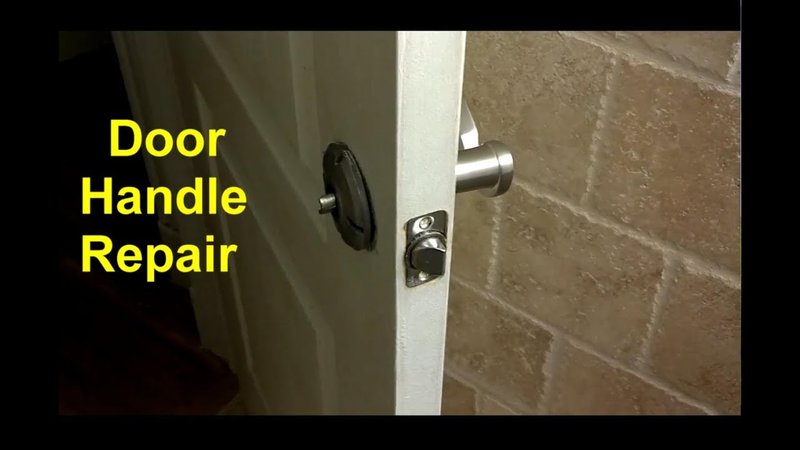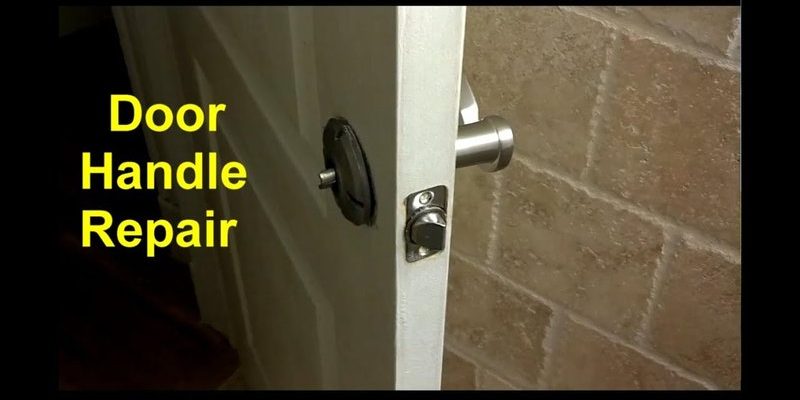
Here’s the thing: exterior door hardware—knobs, levers, deadbolts, even smart locks—all face the elements in ways your indoor hardware never does. As soon as a big storm rolls through, that hardware gets hit by wind, rain, and temperature swings. It’s a bit like leaving your favorite sneakers out in the rain. Even the highest quality locks and handles can end up feeling a bit off, especially after Mother Nature decides to put them through their paces.
Let’s get into what’s really going on, why this happens, and what you can do to keep your doors feeling solid, safe, and secure—no matter what the weather throws your way.
How Storms Affect Door Hardware
Exterior door hardware works hard every day, but a storm is like a surprise bootcamp. The rain seeps into places it shouldn’t, winds slam and pull at your door, and dramatic shifts in humidity cause wood and metal to expand or contract. All of this shakes things up—sometimes literally. If you have a remote-controlled smart lock, like those from August or Yale, electronic components face their own set of weather woes, from moisture getting into battery compartments to sudden sync issues post-storm.
When metal gets wet, especially in older hardware, it can start to corrode. Even stainless steel finishes aren’t immune if water sits too long. Moisture can sneak into screw holes and cause wooden doors to swell, which loosens the once-snug fit around your hardware. If you hear a faint rattle or your handle isn’t as tight as it used to be, chances are, the storm stirred things up behind the scenes.
You might also notice the hardware feeling colder or “stickier” when you turn it after a storm. That’s likely because the metal is reacting to temperature swings, making it expand or contract. Sometimes, the difference is so subtle you only notice it when you grab the handle and wonder, “Didn’t this used to feel sturdier?”
Common Reasons Your Exterior Door Hardware Feels Loose
There’s no single culprit for loose door hardware after a storm, but several factors work together to cause the problem. Sometimes, it’s a classic case of screws backing out. Other times, the storm exposes an underlying issue you never noticed before.
- Wood Expansion and Contraction: Most exterior doors are made of wood or have wood components. When a big storm brings loads of humidity and rain, the door can swell, shifting the hardware enough that screws lose their grip. Once the weather dries out, the door shrinks again, but the hardware rarely resets itself.
- Metal Fatigue and Corrosion: Rain and humidity can sneak into tiny cracks, kickstarting rust or corrosion on the inside of your lock or handle set. Over time, this wear causes pieces to fit together less tightly.
- Vibration and Movement: Strong winds can physically shake your door—even with it closed. That vibration slowly wiggles screws loose, especially if they weren’t tightened to begin with or have small amounts of old lubricant gumming up the threads.
- Smart Lock Electronics: If your keyless entry system or remote-controlled lock feels loose, moisture could be interfering with electronic connections or battery housings, which sometimes “resets” the fit of the device within the mounting plate.
Honestly, no amount of top-notch hardware (not even the fanciest Schlage or Yale models) is completely immune. Weather finds those weak spots, especially on older doors or ones that haven’t been maintained.
How to Check for Damage or Issues After a Storm
If your door hardware feels loose after a storm, it’s time for a little troubleshooting session. The goal is to catch small problems early, not to panic about every jiggle.
- Inspect Hardware Tightness: Gently wiggle the handle, knob, or smart lock mount. If you feel obvious movement, check the screws. Use a screwdriver—not a power drill—to gently test if they’ll turn. If they move easily, tighten them, but don’t overtighten or you might strip the holes.
- Look for Visible Rust or Corrosion: Check inside and around the mounting plate for greenish or reddish stains. That’s a sign water got in. Clean it off with a bit of vinegar and a rag, but if the corrosion looks serious, consider replacing the affected part.
- Test Door Function: Open and close the door several times. Listen for scraping, sticking, or odd sounds. Swollen wood can make even the best hardware fit poorly, so if your door is harder to close, it might be a moisture issue.
- Check Smart Lock Performance: With brands like August or Schlage Encode, see if the digital lock responds to code entry, remote commands, or battery status. If you find glitches, you might need to reset or resync your device after the weather event.
A quick, thorough check right after a storm can save you from bigger headaches down the line. Catching an early issue means you can patch things up before your door starts refusing to close—or worse, before you get locked out.
Why This Matters for Your Security
Loose hardware isn’t just annoying—it can actually put your home’s security at risk. Here’s why you shouldn’t ignore the problem or assume it’ll “fix itself” once things dry out.
When exterior hardware loosens, it creates small gaps that can be exploited. A lock that wiggles in its hole has less grip on your door frame, making it easier for someone to force it open. Even sturdy deadbolts like those from Kwikset or Yale are only as good as the strength of their installation. If the storm knocked screws loose or caused mounting plates to shift, your hardware might not resist a simple break-in.
There’s also the issue of reliability. For smart locks, a loose mounting plate can cause battery contacts to shift or sensors to disconnect, leading to random resets or failed code entry. There’s nothing worse than fumbling with your phone, trying to sync your remote to unlock the door, only to realize the lock itself isn’t aligned anymore.
So, keeping your hardware tight isn’t just about convenience—it’s a big part of keeping your home and family safe.
Tips to Prevent Loose Door Hardware After Storms
Prevention honestly starts with a bit of regular care. Think of it like maintaining your car: a little attention here and there can keep your hardware going strong for years.
- Regularly Tighten Screws: Every few months—or right after a major storm—take a minute to check and tighten the screws on your door hardware. If you notice any that consistently come loose, consider using thread-locking compound for extra security.
- Weatherproof Your Door: Proper door weatherstripping and well-sealed paint or finish help keep moisture out. If you see gaps, replace the weatherstripping. For wood doors, make sure all edges are sealed, not just the front and back.
- Use Quality Hardware: Not all locks and handles are created equal. Higher-end brands like Emtek, Schlage, and Kwikset are engineered to withstand weather better, but even they benefit from a bit of TLC.
- Protect Smart Locks: If your smart lock uses batteries or remote code entry, check that battery housings are watertight and that any paired remotes are stored indoors when possible.
These steps won’t make your door hardware invincible, but they’ll help cut down on annoying post-storm surprises.
When to Repair or Replace
Sometimes, no amount of DIY will tighten things back up. If your handle or lock feels very loose, is starting to pull away from the door, or you spot deep rust, it’s time for a bigger fix.
- Minor Repairs: For simple cases, often all you need is a screwdriver and maybe a drop of oil. Clean the hardware, tighten the screws, and you’re good to go.
- Major Repairs: If the screw holes have worn out (especially in wood doors), you might need to fill them with wood filler, let it set, and then re-drill for a snug fit.
- Replacement: When corrosion is widespread or hardware simply won’t stay tight, it’s worth investing in a new set. Upgrading to a modern smart lock like those from August or Schlage can be a good excuse to boost your door’s security and convenience.
Don’t forget: poor installation is sometimes the real issue. If you’re not confident in your skills, consider calling a locksmith or handyman who knows how to properly sync, reset, and secure both mechanical and electronic door hardware.
Comparing Universal vs Brand-Specific Hardware
You might be wondering if it makes sense to switch to universal door hardware instead of sticking with the original brand. Here’s the scoop.
- Brand-Specific Hardware: These are designed to fit perfectly with the door and locking mechanisms you already have. Schlage, Kwikset, Emtek, and Yale make products with precise specs for their systems, offering easier pairing with smart remotes or code setups.
- Universal Hardware: These can be tempting for budget reasons, but they don’t always fit as snugly. Sometimes, the mounting holes don’t line up exactly, or the hardware doesn’t sync quite right with electronic locks or remote pairing. That can actually make them more prone to getting loose after a storm.
Honestly, if you already have a good-quality brand, it’s usually best to stick with their replacement parts for a perfect fit—especially for exterior hardware that needs to be sturdy and weatherproof.
Smart Lock Troubleshooting After a Storm
If you’re using a smart lock, storms add a layer of complexity. Here’s what to do if your August, Schlage Encode, or Yale Assure lock feels loose or acts up after wild weather.
- Check Battery Contacts: Moisture can cause remote battery contacts to corrode or lose connection. Remove the battery cover, dry any damp spots, and check for corrosion. Clean contacts gently before replacing batteries or trying to sync your remote.
- Reset or Re-Pair: Sometimes, storms can disrupt wireless signals or cause a brief loss of power that requires you to reset or re-pair your lock with its app or remote.
- Test Lock Codes: Enter your unlock code or use the app to check for responsiveness. If the lock isn’t working, consult your brand’s troubleshooting guide—most have step-by-step resets for these situations.
After a storm, smart locks are more prone to glitches—not just loose hardware. Take a few minutes to test and, if needed, reset your device so you’re never locked out when you need it most.
Wrap-Up: Keeping Door Hardware Secure—Even After a Storm
Let me leave you with this: storms may be tough on your home, but exterior door hardware is designed to take a beating—up to a point. The key is to stay ahead with simple checks, quick fixes, and smart upgrades. Whether you use a classic deadbolt or the latest smart lock with remote code entry, a little post-storm care goes a long way. Stay observant, tighten things up, and you’ll keep your home secure, your nerves intact, and your front door feeling just as solid after the next downpour as it was before the clouds rolled in.
